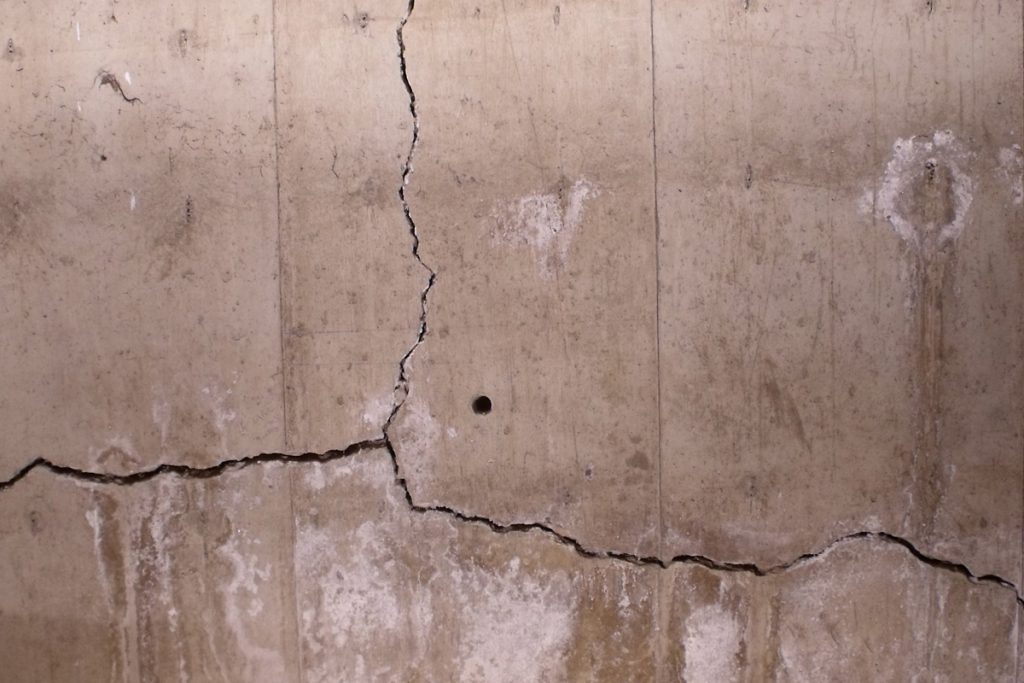Since approximately 1980, most homes in the Greater Toronto Area are constructed with poured concrete foundations. It is widely acknowledged that poured concrete will crack eventually, as shrinkage during the curing process is unavoidable and foundation settlement is relatively common. Given the propensity of concrete to crack, fixing cracks in foundation walls is common and undertaken throughout the world.
How a crack is repaired depends on the crack’s characteristics
From the images above it is clear that foundation cracks and their characteristics can vary quite a bit. The shrinkage crack on the left was caused by the loss of volume of the concrete as water evaporated during the curing process. The wide foundation crack in the center was the result of the settlement of the garage at the front of the house. In fact, the garage was dropping and as a result, it was pulling away from the house. The crack on the right is an example of complete foundation failure likely due to backfilling of the foundation during construction before the foundation achieved full strength.
Given the different characteristics of each of the cracks, clearly taking a “one size fits all” approach to fixing the cracks would not be the responsible thing to do.
What’s involved in fixing foundation cracks
The traditional way of repairing foundation cracks has been, and often still is, excavating a section of the foundation and patching and waterproofing the crack. This repair method is fine as long as we are trying to waterproof a crack which is not expected to widen over time; shrinkage cracks are ideal candidates for this type of crack repair. It should be noted that there is a far cheaper way to waterproof this type of crack using a process referred to as “crack injection“. Also, shrinkage cracks are the most common cracks to be found in basements and they are generally
When structural repair of a foundation is warranted, as in the case of the 1” wide crack above, the crack would have to be closed before it can be waterproofed. Closing the gap of the crack is accomplished by lifting the settled foundation and then holding it in place; a process involving the use of helical piers.
With respect to the crack pattern in the image on the right, the foundation is simply broken. Like a broken wine glass, you can try to glue it together but it will never be nearly as strong as it should be. In instances such as this, a second foundation wall would typically be poured to support the home; again, a civil engineer should be consulted.
